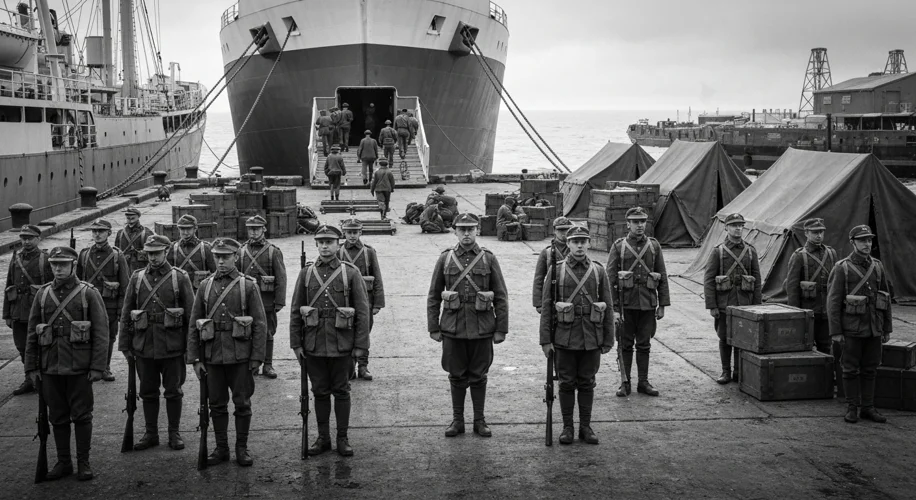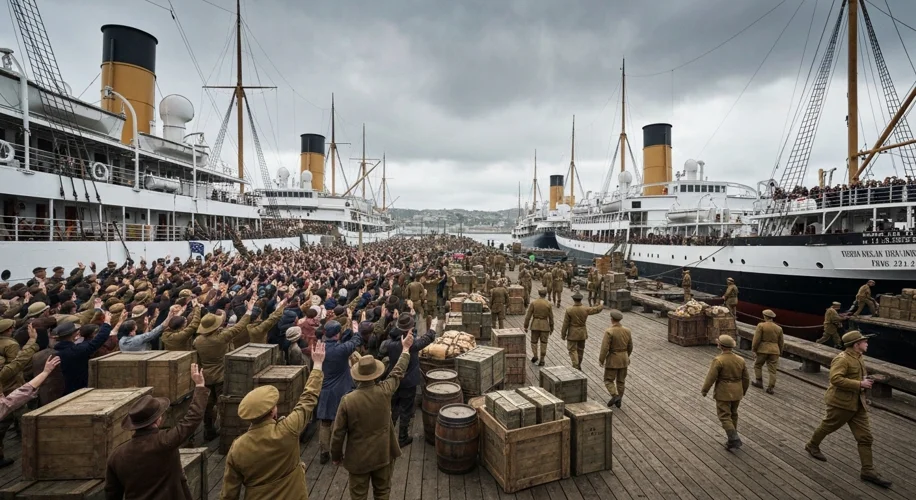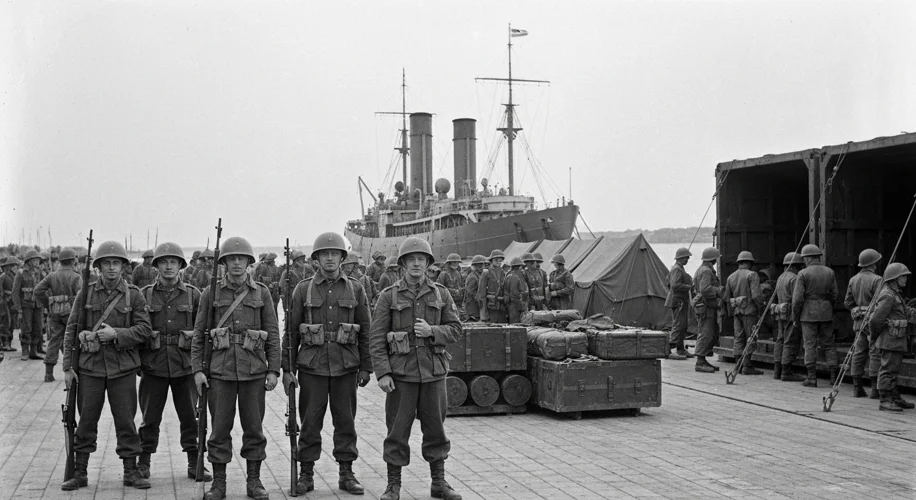The crisp air of August 1914 held a scent of change, a subtle tremor that would soon erupt into the cataclysm of the First World War. For the young Dominion of New Zealand, a nation barely a whisper on the global stage, this tremor heralded a seismic shift. On August 4th, 1914, following the lead of the United Kingdom, New Zealand declared war on Germany. It was a declaration made with a sense of duty, a loyalty to the Crown, and a nascent imperial spirit, but beneath the surface of patriotic fervor lay a complex web of logistical challenges that would test the mettle of this emerging nation.
New Zealand, at the dawn of the 20th century, was a land shaped by its isolation. Its history was one of pioneering spirit, of carving a life from a distant land, and of developing a unique identity. Culturally, it was deeply intertwined with Britain, with a strong sense of kinship and shared heritage. Yet, it was also a nation forging its own path, proud of its independent spirit. The declaration of war was, for many, an extension of this British identity, a chance to stand shoulder-to-shoulder with the mother country in a time of crisis.
The historical context was a world teetering on the brink. The complex system of alliances, the burgeoning nationalisms, and the arms race had created a powder keg in Europe. When Archduke Franz Ferdinand was assassinated in Sarajevo, the fuse was lit, and the world’s great powers were inexorably drawn into conflict. For New Zealand, the news arrived like a thunderclap, transforming an abstract geopolitical struggle into a tangible threat and a call to arms.

Key actors in this drama were not just politicians in Wellington, but the ordinary men who would soon find themselves on troopships steaming towards distant shores. Prime Minister William Massey, a farmer by background, embodied the pragmatic resolve of the nation. He and his government were tasked with the immense responsibility of mobilizing a population and a military infrastructure that, while growing, was still relatively small and inexperienced in large-scale overseas operations. The perspective of these early volunteers was one of adventure, a desire to do their part, and perhaps a romanticized view of warfare, largely untempered by the grim realities to come.
The immediate challenge was, quite simply, getting the men to the front. New Zealand’s contribution to the war effort, the New Zealand Expeditionary Force (NZEF), was to be dispatched with remarkable speed. The first contingent, comprising around 2,000 men, had to be assembled, equipped, and transported. This wasn’t merely a matter of rounding up volunteers; it involved a massive logistical undertaking. Ships had to be chartered or requisitioned, food and supplies procured and stored, medical facilities established, and training conducted.
The logistics were formidable. New Zealand’s geography, while beautiful, presented its own set of hurdles. Its ports, while capable, were not designed for the rapid deployment of an entire fighting force. The assembly point for the first contingent was a makeshift camp at the Trentham military camp, south of Wellington. Here, men who had likely only ever known agricultural or civilian life were drilled, issued uniforms, and readied for a journey into the unknown.

Crucially, the transport of troops across the vast expanse of the Pacific and Indian Oceans was a major undertaking. The NZEF’s first major deployment was not to the Western Front, but to Egypt. The journey itself was a complex operation, requiring a convoy of ships to protect against potential German raiders, particularly the infamous SMS Emden, which was known to be active in the Pacific. The convoy, escorted by naval vessels, made its way across the Pacific, through the Torres Strait, and then across the Indian Ocean to Suez.
The initial phase of the war saw New Zealand’s forces engaged in the defense of its Pacific territories, particularly German Samoa. This operation, while successful, further underscored the logistical reach required and the challenges of projecting power across significant distances. The rapid mobilization and deployment of troops and matériel, from uniforms and rifles to food and medical supplies, required a coordinated effort involving civilian and military authorities, shipping companies, and numerous suppliers.
The consequences of this declaration and mobilization were profound. It marked New Zealand’s entry onto the world stage as an active participant in a global conflict, forever altering its relationship with Britain and the wider world. The war would galvanize a sense of national identity, forged in the crucible of shared sacrifice. The logistical successes, though hard-won, demonstrated the nation’s capacity to organize and execute complex operations, laying the groundwork for future endeavors.
Analyzing the event, the speed of New Zealand’s mobilization for the Great War speaks volumes about the nation’s commitment and its underlying preparedness, despite the scale of the task. It highlights the adaptability of a young nation facing an unprecedented challenge. The narrative of 1914 is not just about the declaration of war; it is also about the intricate, often unseen, machinery of logistics that enabled the nation’s sons to answer the call to arms, setting them on a path that would forever shape their destiny and their place in history.

